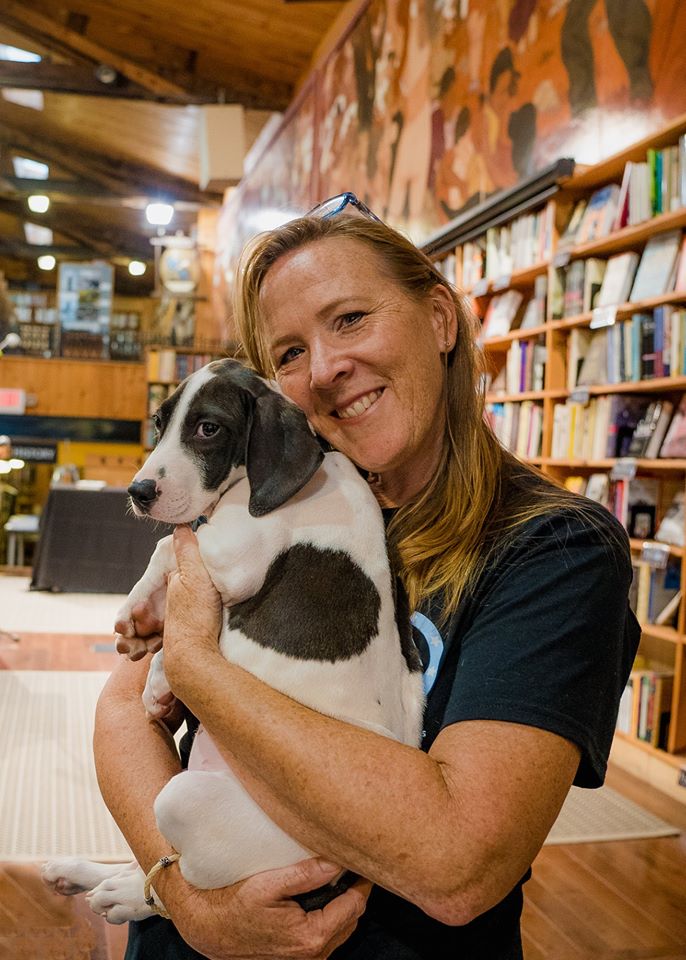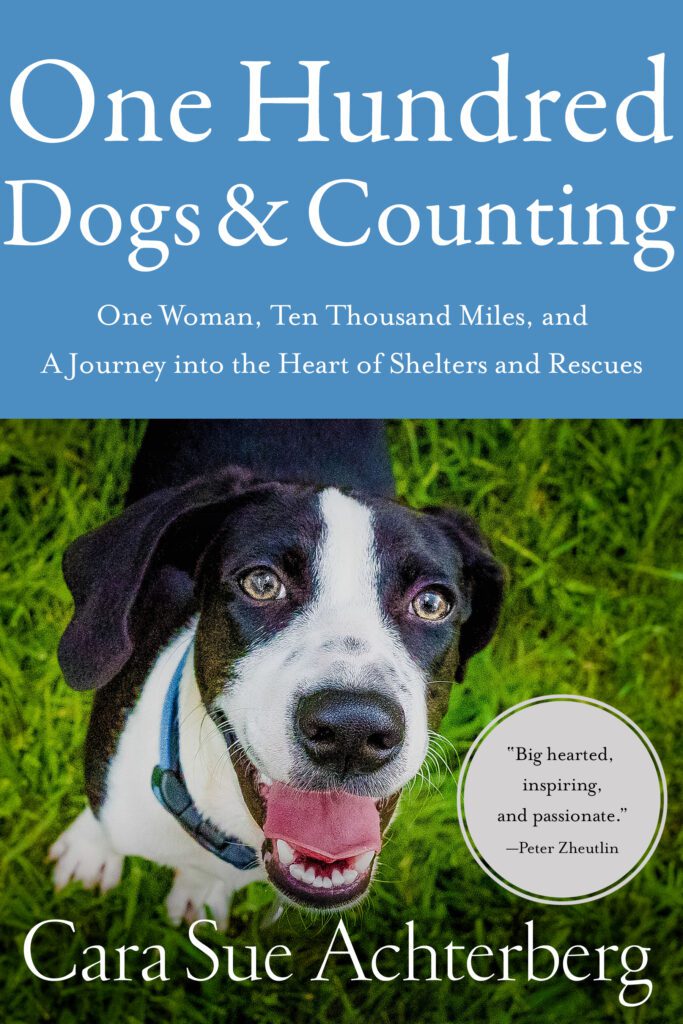“I like to fix things,” explained Ginny, the director of Tazewell County Animal Shelter in southwest Virginia on the West Virginia line, when I asked how she came to work at the shelter. Prior to that, she’d been working for the county in various positions, primarily as an administrative assistant.



She never aspired to work with animals, but the first time she visited the shelter, she met a Great Dane she really liked. The next time she went back to see the dog, he wasn’t there. When she asked the director where he’d gone, she was told that he was now a “flower in Jesus’ garden.”
At that time the shelter was euthanizing 62% of their animals. So when the job came up at the shelter, Ginny applied and has been the director for nine years. Last year, the shelter handled over 1000 dogs and euthanized only 3 (one for behavioral reasons and two for medical reasons).



Their success has been through incredibly hard work, great leadership, excellent veterinary support (Crab Orchard Veterinary Services ), and smart policies and programs. Five years ago, Ginny had the opportunity to design the current shelter. She worked with Anne from Crab Orchard Veterinary to create a useful space that is the best it can be for the dogs in terms of mental and physical health.
They set up the kennels in such a way that no dogs are looking at each other. In most shelters, kennels are in long rows facing each other, creating a stressful environment. There are four ‘zones’ in the building. Each contains 8 kennels with guillotine doors (currently they are over capacity, so a few dogs are doubled up by closing the guillotine doors). Each zone has its own ventilation system and HVAC. That way, if there is an outbreak of something like influenza, only eight dogs are affected instead of the entire population.



The shelter takes all dogs brought to them by Animal Control (which is a separate entity under the sheriff’s department and Ginny says they have the best ACOs anywhere). The shelter accepts owner surrenders on a managed intake basis. Ginny will counsel would-be surrenderers, trying to find out why they want to surrender their pet/s and addressing those issues with the goal being to keep the pet in the home.
The shelter does have a small population of cats. They don’t accept feral cats (there is no Trap-Neuter-Release in the county) and carefully manage the intake of cats from the general public. Last year they handled about 300 total.



Betty has been the rescue coordinator for five years. She manages their rescue connections and transports, and is a strong advocate for the work the shelter does. She commutes 3 hours from her home in Elkton to volunteer at the shelter a few days a week. She makes the drive because the need is so great in Tazewell and she feels she can make a bigger impact than she can where she lives. And clearly, she loves the staff and animals here. Actually, all of the staff (four full-time and 3 part-time) seemed happy to be there – enjoying each other and the dogs too. Betty walked us through to meet some of the dogs and shared story after story.




The shelter does a lot of local adoptions, but more dogs go out via rescue thanks to the hard work Betty does. While, Anne, the vet at Crab Tree, is really good to them and does all she can, there simply are not enough surgery spots, so spay/neuter appointments are often two months out. They do adopt dogs out with a spay/neuter voucher that the adopter pays for. Ginny follows up to be sure the surgeries happen and says she does not hesitate to repo an animal if necessary.
All puppies are sent out through rescue. Ginny only adopts out adult dogs, calling herself an ‘adult dog pusher.’ “Why would you want a puppy?” she asked. I have to agree with her on that one. Adopting a puppy is always a crap shoot – you won’t know what kind of dog you have (size, temperament, etc.) for 18 months to 2 years.






Ginny refuses to label her dogs any breed. “If I wasn’t there at the moment of conception, then I have no idea what breed of dog we’ve got here.” Instead, all the kennel cards describe the dog by temperament and personality.
This is the first shelter or rescue we’ve visited in our more than 100 shelters that does not label their dogs. It’s a pet peeve of mine that dogs are so often mislabeled and that label can mean life or death. I wish more shelters would follow Tazewell County’s lead on this.
Ginny is remarkable. She has transformed this shelter and continues to lead with smart policies and practices, and a willingness to try new things. But what’s really remarkable is that she not only works at the shelter forty hours a week, she also works a handful of other county jobs, including working emergency management when needed, and handling the billing for multiple departments. I would wager that her experience working in county management enables her to be extremely effective in managing the shelter and advocating successfully for its needs.







We talked about the vulnerability created when a shelter relies on rescues to move their dogs. While Ginny is grateful for the rescue partners they have, she acknowledged that rescue is a band-aid and not a long-term solution. I asked what it will take for the shelter to reach that long-term solution. And just like she told the reporter who was there to cover our visit, she said spay and neutering is critical. There is an extra building behind the shelter, and Ginny dreams of renovating it into a clinic space so they can do spay/neuter on site and handle their own medical needs.
Meanwhile, Tazewell County is lucky to have such a smart, resourceful, caring woman at the helm of their shelter, not just fixing things, but making them better.

Until each one has a home,
Cara
If you want to learn more, be sure to subscribe to this blog. And help us spread the word by sharing this post with others. Visit our website to learn more.
You can also help raise awareness by following/commenting/sharing us on Facebook, Instagram, YouTube, Tik Tok, and the Who Will Let the Dogs Out podcast.
To see our Emmy-nominated, award-winning short documentary, Amber’s Halfway Home, click here. If you’d like to see it on the big screen (along with other short dog films), check out the tour schedule of The Dog Film Festival, currently in art movie houses all over the country.

Learn more about what is happening in our southern shelters and rescues in the book, One Hundred Dogs & Counting: One Woman, Ten Thousand Miles, and a Journey Into the Heart of Shelters and Rescues (Pegasus Books, 2020). It’s the story of a challenging foster dog who inspired me to travel south to find out where all the dogs were coming from. It tells the story of how Who Will Let the Dogs Out began. Find it anywhere books are sold. A portion of the proceeds of every book sold go to help unwanted animals in the south.
For more information on any of our projects, to talk about rescue in your neck of the woods, or become a WWLDO volunteer, please email whowillletthedogsout@gmail.com or carasueachterberg@gmail.com.



Ann Coleman
Impressive!!! Keep up the good work!